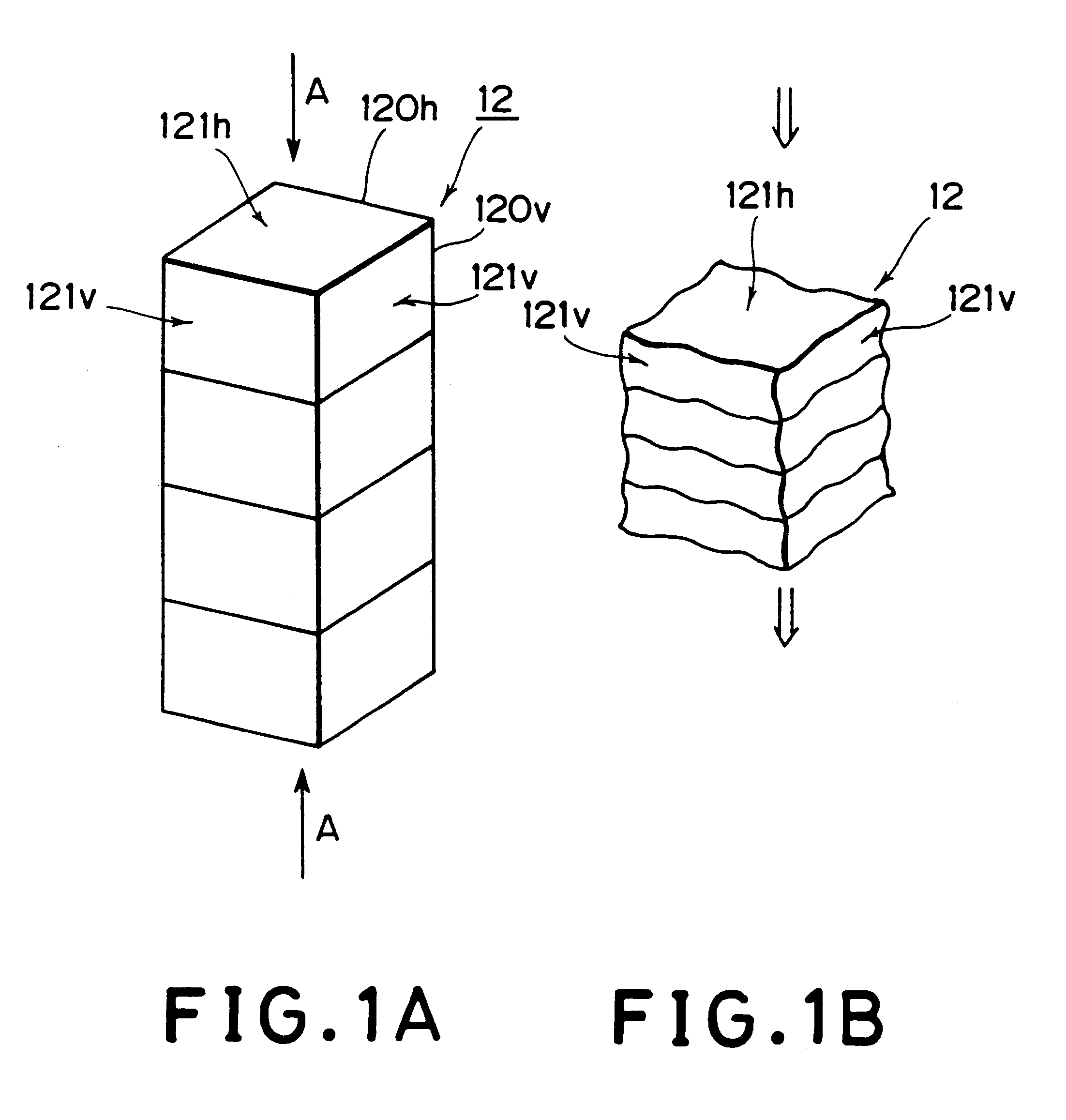Ink tank, head cartridge and ink jet printing apparatus
a printing apparatus and head cartridge technology, applied in printing and other directions, can solve the problems of difficult to completely remove foamed block films, large amount of residue practically adhering to each void, and inability to exhibit the function of absorbing ink
- Summary
- Abstract
- Description
- Claims
- Application Information
AI Technical Summary
Benefits of technology
Problems solved by technology
Method used
Image
Examples
second embodiment
of Second Embodiment)
FIG. 7 is a perspective view of an ink tank constructed according to an embodiment modified from the second embodiment of the present invention, particularly showing the structure of the ink tank in the disassembled state.
Referring to FIG. 7, while a foamed block 232 molded of a melamine resin is accommodated in a housing 231, a dimension a2 of the foamed block 232 located remote from an ink feeding port 233 is determined to be smaller than a dimension a1 of the same located in the proximity of the same so that the foamed block 232 has a certain gradient across the length of the foamed block along the upper surface of the same between both the dimensions a1 and a2. With such construction, while the foamed block 232 is accommodated in the housing 233, a cell size of the foamed block 232 is distributed such that a number of cells are forcibly formed in such a manner as to allow the cell size to become smaller as the measuring position approaches toward the ink fee...
modified example 2
(Modified Example 2 of Second Embodiment 2)
FIG. 8 is a perspective view of an ink tank constructed according to another embodiment modified from the second embodiment of the present invention, particularly showing the structure of the ink tank in the disassembled state.
Referring to FIG. 8, the ink tank includes a foamed block 242 molded of a melamine resin and a housing 241 in which the foamed block 242 is accommodated, and a number of holes 247 each extending from an atmosphere communicating port 243 side toward an ink feeding port 246 side are formed through the foamed block 242 in the longitudinal direction. With this construction, lattices (composed of fibers) forming a number of cells in the foamed block 242 are separated from each other, causing a part of the foamed block 242 having an enlarged pore size to be forcibly formed. Consequently, ink can stably be fed to a printing head 244 attached to the fore surface of the housing 241. The extension of each hole 247 from the atmo...
third embodiment
(Third Embodiment)
This embodiment is intended mainly to illustrate a forming process to be employed when holes and slits described above in the aforementioned embodiments modified from the second embodiment of the present invention are formed in an ink absorbing member molded of a melamine-formaldehyde condensate.
FIG. 11 shows by way of perspective view the structure of an ink absorbing member constructed according to a third embodiment of the present invention wherein a cutting operation and a hole forming operation are performed for the ink absorbing member by actuating a water jet cutter. In the drawing, reference numeral 301 designates an ink absorbing member, reference numeral 302 designates a plurality of holes each formed by actuating the water jet cutter, and reference numeral 310 designates a filter disposed at an ink outflow portion of the ink absorbing member 301. Incidentally, an ink tank, a housing and a printing head each associated with the ink absorbing member are no...
PUM
 Login to View More
Login to View More Abstract
Description
Claims
Application Information
 Login to View More
Login to View More - R&D
- Intellectual Property
- Life Sciences
- Materials
- Tech Scout
- Unparalleled Data Quality
- Higher Quality Content
- 60% Fewer Hallucinations
Browse by: Latest US Patents, China's latest patents, Technical Efficacy Thesaurus, Application Domain, Technology Topic, Popular Technical Reports.
© 2025 PatSnap. All rights reserved.Legal|Privacy policy|Modern Slavery Act Transparency Statement|Sitemap|About US| Contact US: help@patsnap.com



